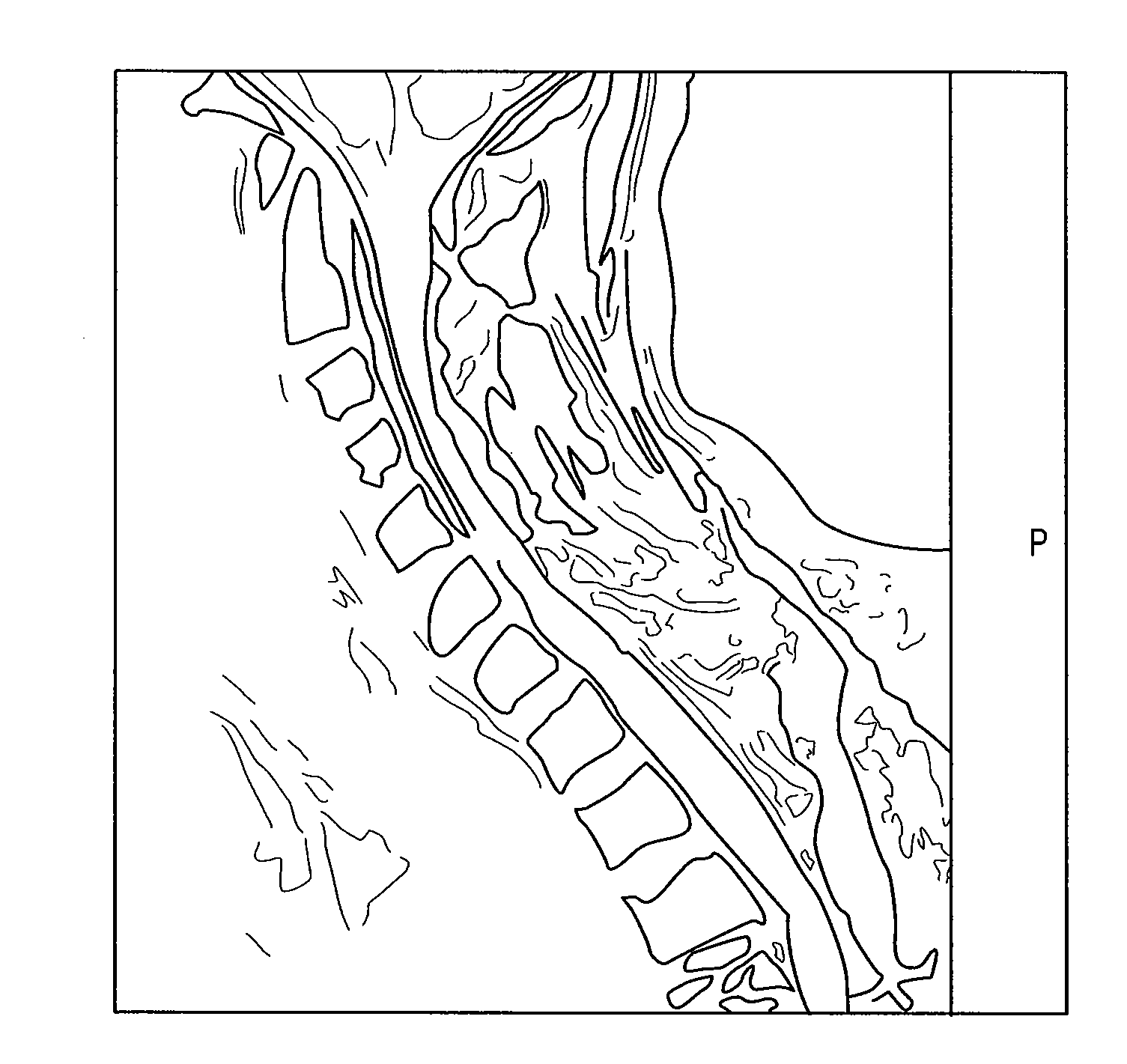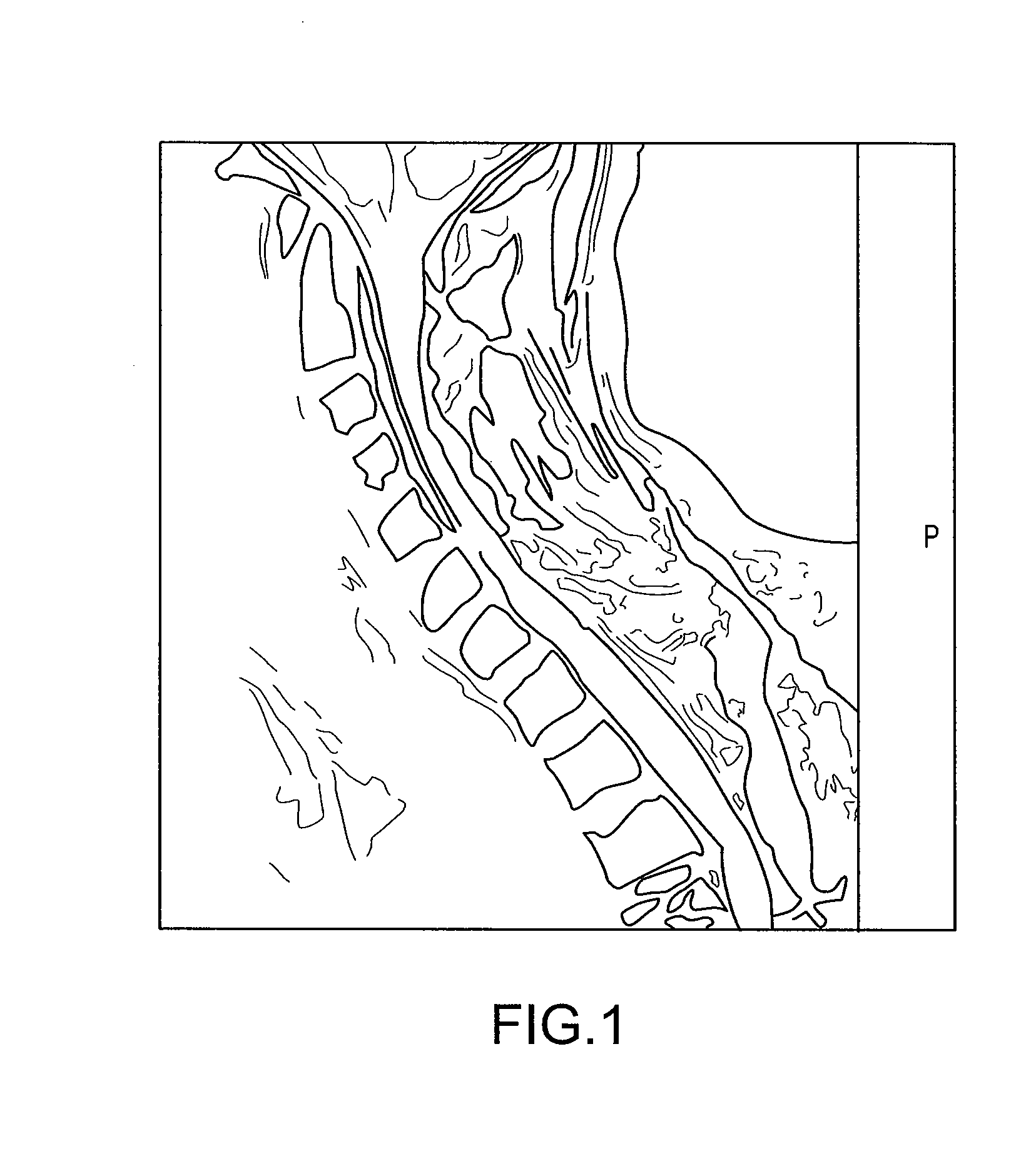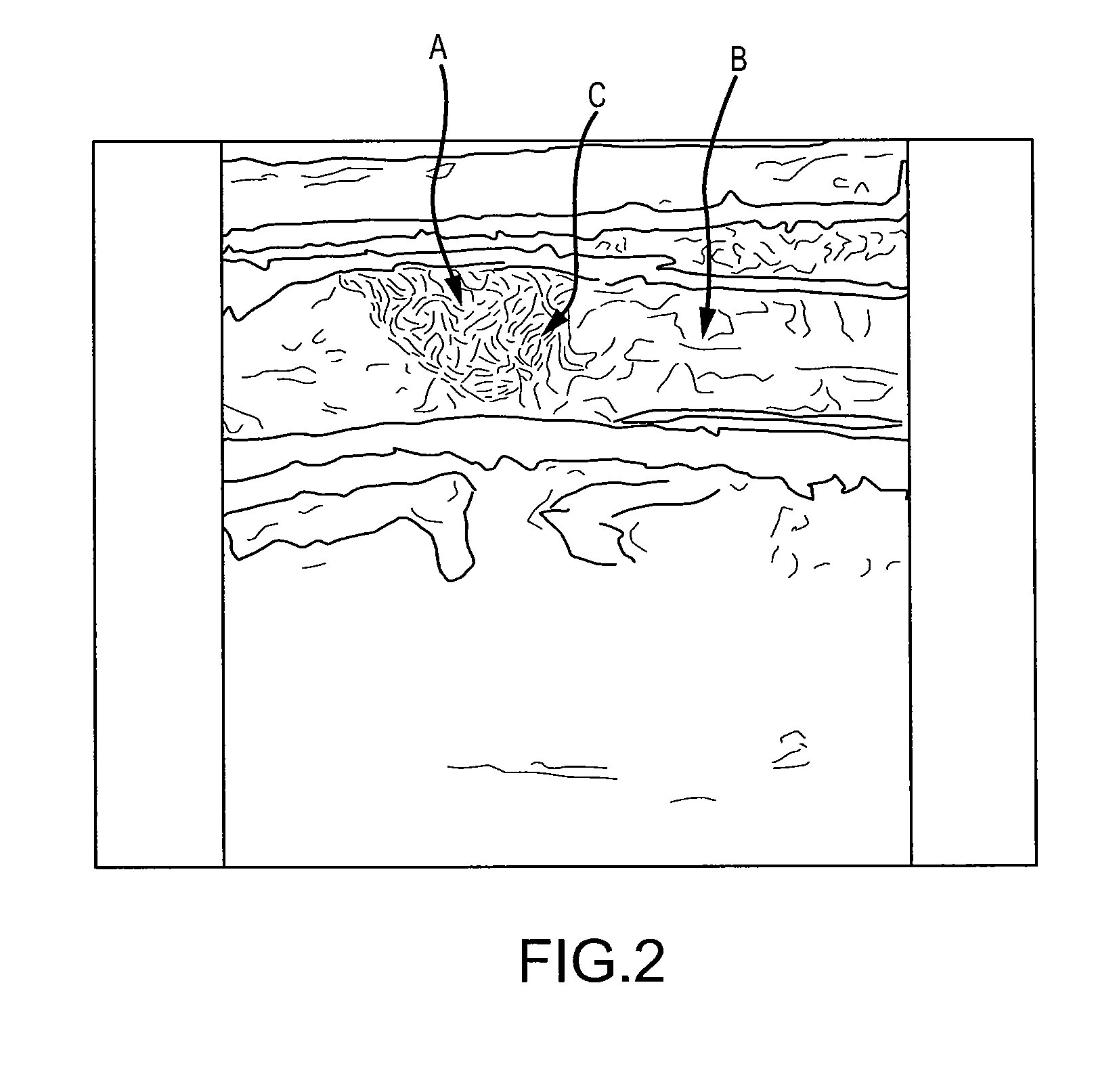Methods and compositions for delivering therapeutic agents to the central nervous system
a central nervous system and therapeutic agent technology, applied in the direction of drug compositions, applications, ultrasonic/sonic/infrasonic diagnostics, etc., can solve the problems of spinal cord injury, loss of motion, and altering the patient's everyday life, so as to inhibit nerve impulses, inhibit exotoxic shock, and promote axonal regeneration or remyelination.
- Summary
- Abstract
- Description
- Claims
- Application Information
AI Technical Summary
Benefits of technology
Problems solved by technology
Method used
Image
Examples
example
[0071]MRI, Ultrasound and Electrical Signature Map Target Sites For Delivery of A Cellular Therapy in an Injured Spinal Cord
Clinical Materials and Methods:
[0072]A combination of data from one or more patients has been used to illustrate one embodiment of the present invention. Data was selected to illustrate one or more aspects for targeting and delivery of a cellular or biologic therapy to an injury site. Data for the present invention was obtained from patients who have sustained traumatic thoracolumbar spinal cord injuries.
[0073]Patients eligible for cellular or biological therapy to the spinal cord typically have had an injury causing significant damage to one or more regions of the spinal cord.
Preoperative Procedures:
[0074]A patient scheduled to undergo the methods of the present invention will undergo preoperative evaluation with one or more of: plain x-ray, magnetic resonance imaging (MRI), and / or cat scan (CT) myelography. The combination provides an evaluation of the spinal...
PUM
 Login to View More
Login to View More Abstract
Description
Claims
Application Information
 Login to View More
Login to View More - R&D
- Intellectual Property
- Life Sciences
- Materials
- Tech Scout
- Unparalleled Data Quality
- Higher Quality Content
- 60% Fewer Hallucinations
Browse by: Latest US Patents, China's latest patents, Technical Efficacy Thesaurus, Application Domain, Technology Topic, Popular Technical Reports.
© 2025 PatSnap. All rights reserved.Legal|Privacy policy|Modern Slavery Act Transparency Statement|Sitemap|About US| Contact US: help@patsnap.com



